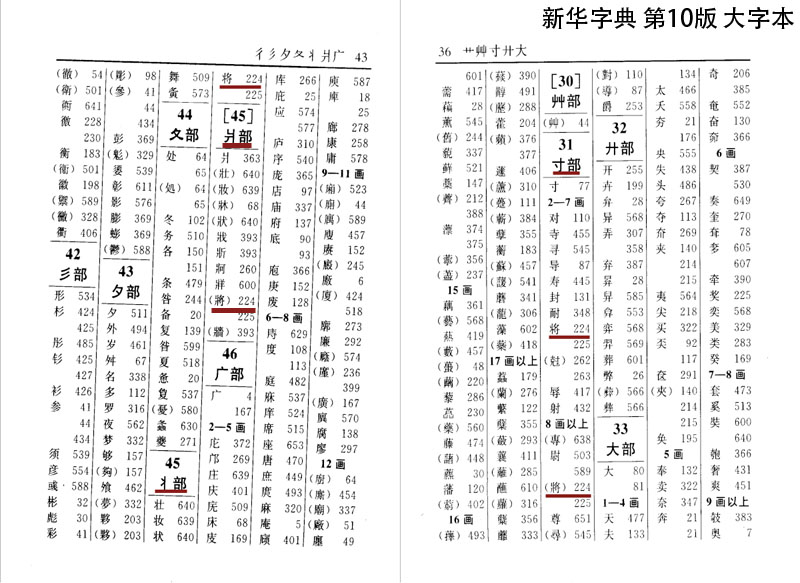Before answering of which radical 将 should be, let me introduce some authoritative reference books.
For traditional Chinese: 康熙字典 (compiled in Qing Dynasty) and 說文解字 (compiled in Eastern Han Dynasty by Xu Shen). The online dictionary I highly recommend is 漢典.
For simplified Chinese: 新华字典. Its online version is 在线新华字典. However, I find the online version is not well edited to include all information of the print published version.
So, of which radical 将 should be?
康熙字典 lists 將 as 寸 radical.
【寅集上】【寸字部】〔古文〕𢪇《廣韻》卽良切《集韻》《韻會》《正韻》資良切,𠀤音漿。《說文》本將帥字。一曰有漸之辭。《蘇林曰》將,甫始之辭。《易·繫辭》是以君子將有爲也,將有行也。
說文解字 lists 將 as 寸 radical.
【卷三】【寸部】將 帥也。从寸,𤖕省聲。卽諒切。
新华字典(10th Ed.) lists 将 as 寸 radical or 丬 radical.

Thus, a very safe answer to this question is the radical of 将 is 寸. But there's another question: the ancient Chinese academic authorities thought the radical of 將 should be 寸, why now the new standard considers 丬? My personal answer to this one, is
It is because the motivation of radicals is, to classify Chinese characters and then people can search them easily in a dictionary. 将 is a left-right structured character, so if having not learnt the etymology of 将, nowadays, very possibly one native Chinese would consider its radical is just 丬. In order to meet this language intuition, the government made such a standard to include 丬 as one radical candidate for 将.
For your second question: can one really say that 爿 is phonetic in 將? The answer is no. As said in 說文解字, the phonetic part of 将 is
𤖕省聲
So it should be 酱 (𤖕 is the variant character of 酱, now is seldom seen), i.e., 爿+⺼. Maybe I should explain what "Y is X省声/省聲" means, it is a terminology used by Xu Shen, the ancient Chinese academic authority in Eastern Han Dynasty, to describe the phonetic part of Y is a simplified form of the character X. BTW, 爿 sounds pán in Mandarin Chinese.
For your third question: why would ⺼ + 寸 be considered the semantic part?
The definition of the phono-semantic compound character (see wiki) is
a character with approximately the correct pronunciation (the phonetic element, similar to a phonetic complement) with one of a limited number of determinative characters which supplied an element of meaning (the semantic element, called a "radical", which centuries later would be used to organize characters in a dictionary).
So, the parts which supplied an element of meaning can be considered as the semantic parts in a phono-semantic compound character. However, the case of 将 is a little special. 爿(table), ⺼(meat), 寸(hand), they all supply meaning elements to form the final meaning. Thus, they should be all considered as semantic parts (and 爿+⺼, i.e. 酱, is either the semantic part or the phonetic part) -- that's the reason why 将 is not only a phono-semantic compound character but also an ideogrammatic compound character.
PS: I think you've asked a brilliant question :)
EDIT 1
As the terminology radical is a little ambiguous, all "radical"s I mention in this answer mean the section header of a Chinese dictionary.
EDIT 2
You may still wonder why the ancient Chinese authority thought the radical of 将 is 寸. Qing Dynasty's scholar, Duan Yucai's book 說文解字注 ("Notes on 說文解字") said
將 [...] 从寸。必有法度而後可以主之先之。故從寸。
Which means "The radical of 將 is 寸. There must be laws first, and then [將] can rule people, and exceed people in status. Thus, the radical of 將 is 寸". Ah, I should also explain why 寸 is related to law: in 康熙字典.
寸者,忖也,有法度可忖也。凡法度字皆从寸。
which means "寸, implies 忖(it sounds like 寸, and means deliberate), and then implies there are laws to be deliberated. Thus, all characters about laws are related to 寸". So, it's the reason.
EDIT 3 One may argue that, "WTF is the phonetic part 爿⺼?! It's not like a character at all. Writing 酱 for that is weird!" If you unluckily ran into such a question, just show the questioner a seal script of 酱 (generally, there are many kinds of seal scripts corresponding to one character we use today, this is only one of them):

Then it's perfectly composed only by 爿 and ⺼.

